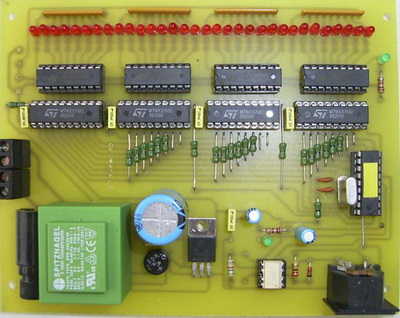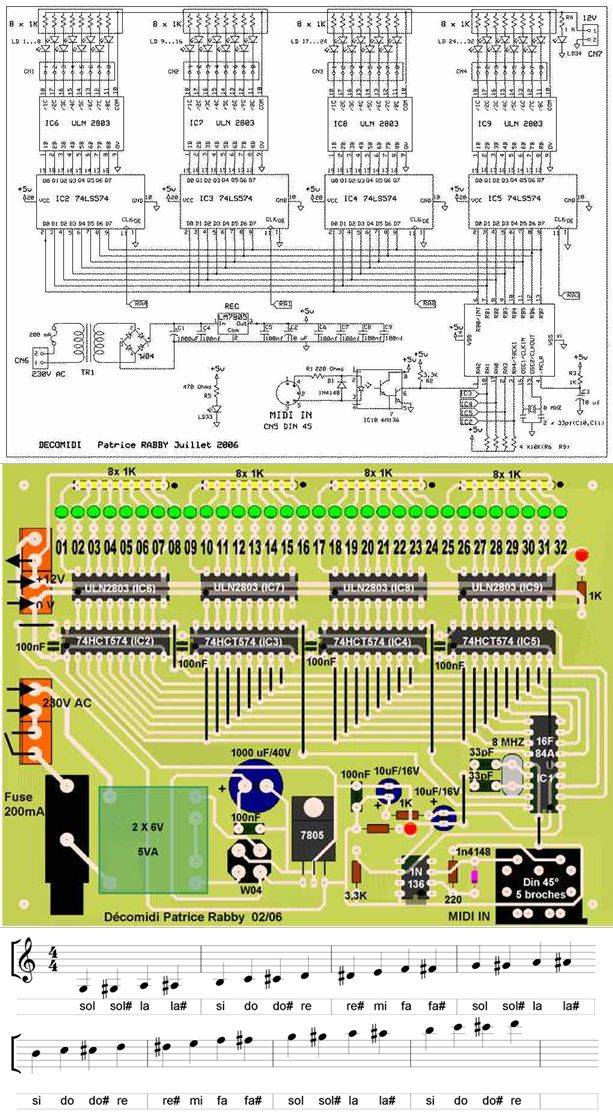
Midi 32-channel decoder circuit made with PIC16F84 microcontroller pic çoklanıp with 74LS574 outputs given the output circuit uln2803 12v dc and dc 5v (integrated supply) is working with a list of materials and source code are printed circuit boards. PIC assembly prepared with the software.
PIC16F84 32-outputs MIDI Decoder
Here is the description a 32 outputs MIDI able to switch relays, electromagnetics devices… in order to automate a mechanical musical instrument, or command lights…
Data from a musical instrument equipped with a MIDI output or sound card (MIDI) are analyzed by the software on the PIC 16F84. The IC10 optocoupler (6N136) provides galvanic isolation.
Outputs PortB form a parallel 8 bit data bus to 4 74LS574 (8 latches). The PortA 1,2,3,4 outputs control the storage of these 74LS574 Buffers power ULN2803 can control loads up to 2A.
The 5V power supply is built around a 7805 controller. CN7 connector receives power from 9 to 24V depending on the type of relay or solenoid.

Source: victorseraphine.com PIC16F84 pic assembly source code Midi 32-channel decoder circuit schematic pcb alternative link:
Şifre-Pass: 320volt.com
Publication date: 2008/06/17 Tags: microchip projects, microcontroller projects, pic assembly example, pic16f84 projects
Magnetic Levitation Circuit
These coilguns with levitation control circuits are great! Now… How can you use them for magnetic levitation? This is slightly off-topic from coilguns, but magnetic levitation has many common design principles and is a little easier to build!
If you hold two permanent magnets close together, you see that one of them will jump strongly toward (or away) from the other. In 1842, Samuel Earnshaw expressed the perversity of inanimate magnetic objects in his theorem. It explains this frustrating behavior will always prevent you from suspending one permanent magnet above or below another, no matter how one arranges the two magnets. However, an active control circuit can get around this problem by rapidly adjusting the magnet’s strength.